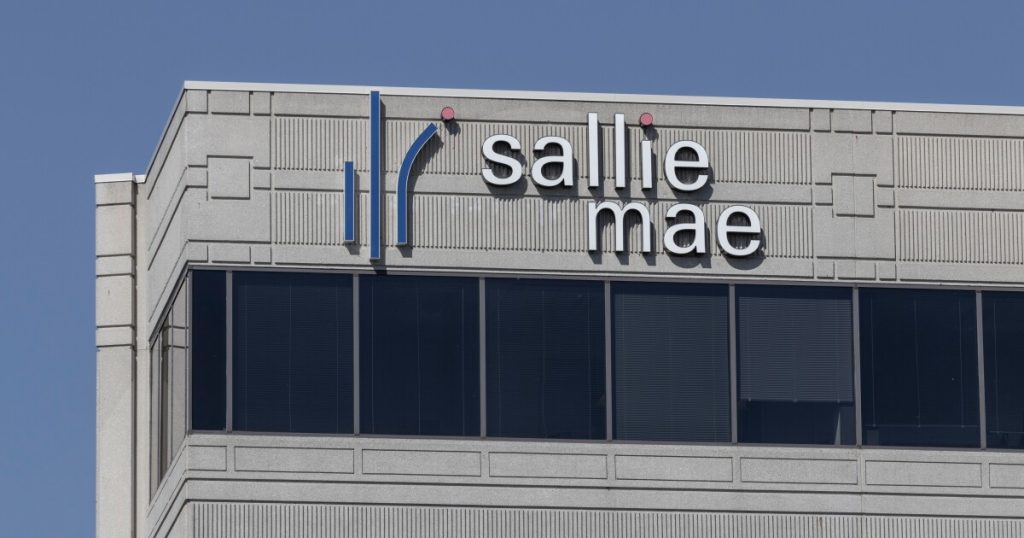The stock price of private student lender Sallie Mae has surged in the wake of President-elect Donald Trump’s victory, since investors are hoping that federal student loans will be scaled back under Republican power, driving more business to the private sector.
Trump’s victory, along with incoming GOP majorities in both the House and Senate, has renewed talk that federal loans to both graduate students and parents of undergraduates will be either curtailed or eliminated.
Sallie Mae’s stock has ripped 23% since the election. If major student loan reforms get enacted, the company’s dominance in the private market could position it to gain lots of additional customers who would’ve previously turned to the federal government.
“Given the size of these programs, even minor cuts or curtailments could have a material positive impact to SLM’s origination volume potential,” Compass Point Research analyst Giuliano Bologna wrote in a note to clients, referring to Sallie Mae’s stock ticker.
Sallie Mae, once part of the federal government, makes more than half of the nearly $14 billion in private higher education loans taken out every year, Bologna wrote. If the company does see a boon, it will be because the two so-called PLUS programs comprise an even bigger market.
The U.S. government made nearly $11 billion in parent PLUS loans last year, plus another $13 billion in graduate PLUS loans.
If the programs are scaled back, not every affected borrower would meet Sallie Mae’s underwriting standards. And even though some other banks have retreated from student lending — Discover Financial Services is
Still, analysts predict a meaningful boost to Sallie Mae’s earnings if it captures a big chunk of PLUS borrowers.
The company’s relatively small graduate-school loan portfolio would suddenly make up a larger share of its business, TD Cowen analyst Moshe Orenbuch wrote in a note to clients. And while Sallie Mae stopped offering loans to students’ parents in 2021, it could restart the program if the federal government limits Parent PLUS loans, Orenbuch added.
There’s a “growing consensus” on Capitol Hill that some sort of student loan changes are necessary, Peter Graham, Sallie Mae’s chief financial officer, said at a conference in September. Such actions could include caps to the PLUS programs, Graham said in his preelection comments, though he also noted that lawmakers could increase grants to students with greater financial need.
“Sallie Mae has long advocated for thoughtful federal student lending reform that balances the priorities of access, affordability, and completion while ensuring families do not borrow beyond their means,” Sallie Mae spokesman Rick Castellano told American Banker in an email. “We hope to see continued progress for this important work.”
Some conservatives want to go beyond curtailing federal student loans. The Heritage Foundation’s Project 2025 document
“The federal government does not have the proper incentives to make sound lending decisions, so the new Administration should consider returning to a system in which private lenders, backed by government guarantees, would compete to offer student loans,” the Project 2025 document says.
If such a major overhaul proves not to be possible, the Heritage Foundation recommends a series of changes to undergraduate loans, plus an elimination of PLUS loans for graduate students and undergrads’ parents.
Doing so would save money and reduce “redundant” programs, the document says, noting that the federal government offers graduate loans through the Stafford loan program and that private lenders offer loans to parents.
The Student Borrower Protection Center, a progressive group that focuses on reducing student debt, is sounding alarms over the potential elimination, or capping, of PLUS loans.
Scrapping the programs would “leave students and borrowers at the mercy of these private and less accountable companies,” said Persis Yu, the group’s deputy executive director.
Private student loans may come with higher interest rates and without the same types of protections that the federal government offers, Yu noted. Those safeguards include the ability to make payments that are based on the borrower’s income, along with the possibility of loan forgiveness if borrowers work in public service.
Other borrowers may be shut out based on private lenders’ underwriting criteria, Yu noted, nixing their hopes of landing jobs that increasingly require graduate education. Those jobs include positions where salaries are relatively low compared to those of doctors or lawyers.
“That’s part of the goal of the Higher Education Act, is to provide access,” Yu said, referring to the 1965 law that governs federal student loans. “Because we do want folks from low-income communities and communities of color to be able to become social workers and nurses and teachers.”
Similar concerns have scuttled past efforts to cut back the PLUS programs, said Jason Delisle, a senior fellow at the Urban Institute and a former Republican staffer on Capitol Hill. While there’s still some appetite for curtailments, certain lawmakers who are skeptical of the programs may end up getting “cold feet,” Delisle said.
“There’s a lot of bark,” he said. “I don’t know how much bite there is.”
Terry Ma, a Barclays analyst who covers Sallie Mae, said lawmakers could decide to pair any reduction to the PLUS programs with an expansion in the amount that undergraduates can borrow.
Undergrads can currently borrow between $5,500 and $12,500 a year from the federal government, depending on their year in school and whether their parents claim them as dependents, according to the Congressional Research Service.
Any increases in those limits could reduce the amount of extra financing that undergrads need from Sallie Mae and its competitors, Ma said.
But no matter what changes come from Washington D.C., Sallie Mae has some “real momentum” that’s also driving its recent stock gains, Ma said.
Discover, once a major name in private student lending,
Sallie Mae, which has a “dominant market share,” is set to pick up a large chunk of business from Discover’s exit, Ma said.

